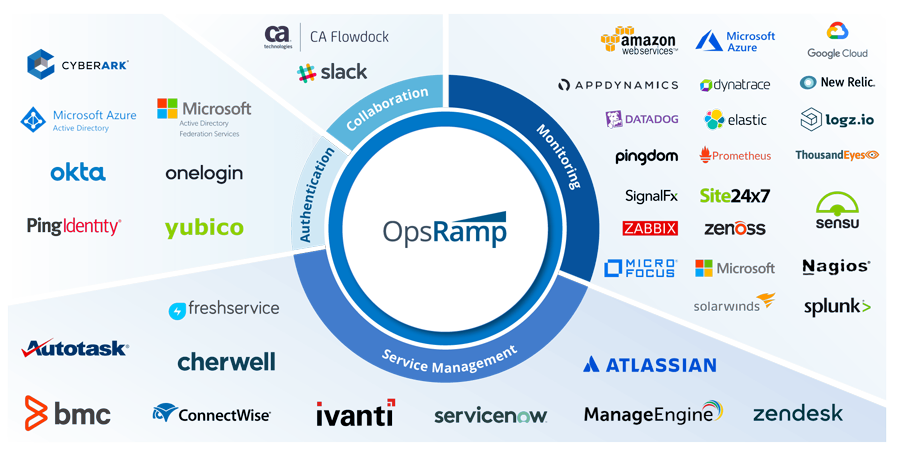There’s no getting around the prevalence of heterogeneous tools in IT operations and DevOps. Teams have built up ecosystems of tools over time for different infrastructure, workflows and applications – and while some of them are outdated or duplicitous – plenty still serve a useful purpose in the enterprise. Yet unfortunately tool sprawl adds to the complexity of monitoring a hybrid or multi-cloud environment. It also hampers visibility and centralized decision-making because one must navigate through multiple screens to identify the root cause of an issue. Yet integrating point tools within an IT operations management (ITOM) platform doesn't necessarily solve the problem. You may not actually need all this data and your outdated tools may not be worth supporting. So how do you ensure that you are getting maximum value from your point tool integrations?
In a recent IT operations survey, nearly 40% of IT teams reported that they are using 10+ monitoring tools while 18% have 20+ monitoring tools in their organization.
Here are some of the challenges that come from maintaining siloed, disconnected monitoring tools:
Limited scope with manager-of-manager (MoM) layer: Most of the Manager-of-Manager platforms act as an aggregator for events. While useful to achieve a consolidated view of events, not all can control the noise of alerts nor show impact analysis of an alert on business services.
Maintaining end-of-life legacy tools: Your legacy tools may still be needed to support critical business services. Over time, maintenance of these legacy tools is not only overhead for your operations users who want to migrate to modern IT infrastructure, but what will happen when your unsupported tools finally break down? Modern integration channels include REST APIs and webhooks and these are typically not supported by legacy tools.
Integration failures: As many point tools are integrated with each other to run hybrid IT operations, these integrations must be monitored and maintained manually. When integrations break, it leads to heavy manual processes to identify the points of failure, coordinate with multiple tool owners affected by the incident along with vendor support, identify the root cause, and create a process to track and maintain integrations with custom solutions.
In a recent IT operations survey, nearly 40% of IT teams reported that they are using 10+ monitoring tools while 18% have 20+ monitoring tools in their organization.
3 Ways to Improve ITOM Integrations
- Maximize the value of your monitoring tool integrations by incorporating analysis and automation. Getting a single (or close to it) view of all your metrics is the foundation, but not the end of your integration strategy. By adding intelligence, such as through AI and machine learning capabilities, you can correlate data and identify patterns from event data that eliminates the garbage from the critical alerts affecting key business services. This means you can start on the pathway of fixing what matters faster versus spending manual effort deciphering all the numbers. Consider how historical analysis of events may also inform future tactical and strategic decisions about your IT infrastructure.
- Expand your user base: The hard work of integrating multiple (even dozens) of monitoring tools into a centralized platform should have multiple outcomes: not just serving your IT operations team. How about your business users? A business leader (such as the supply chain executive) could gain value from metrics showing the performance of a new cloud service and common issues users have with the application or service that could be causing low adoption. A modern ITOM platform should have a user-friendly interface and dashboards that are accessible by a variety of roles within and outside of IT.
- Future-proof your integrations strategy: The capability of the ITOM platform to integrate with legacy and modern technology platforms is a critical factor for its long-term viability. The onus is on product vendors to continuously perform research and analysis to ensure that the product roadmap is clearly defined and dictated to customers. By building a Digital Operations Command Center, IT organizations can properly maintain and track the health of business services as these workloads are upgraded based on usage, enhancements to back/front end technologies, optimization plans, business expansion, infrastructure changes and many more aspects. With a comprehensive, future-proof integration strategy, IT can analyze aggregated data sets to make sound business decisions that positively impact company growth.






